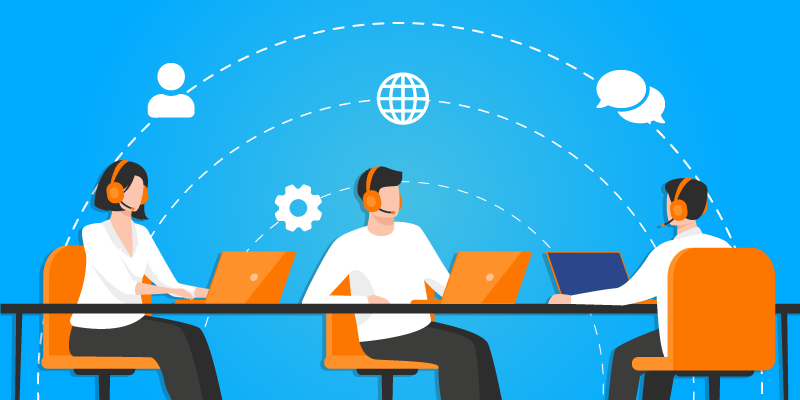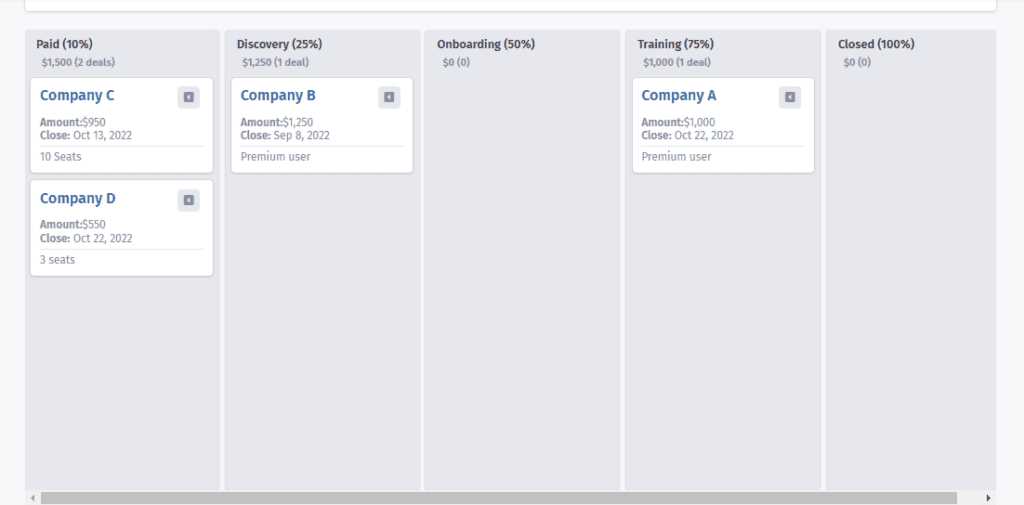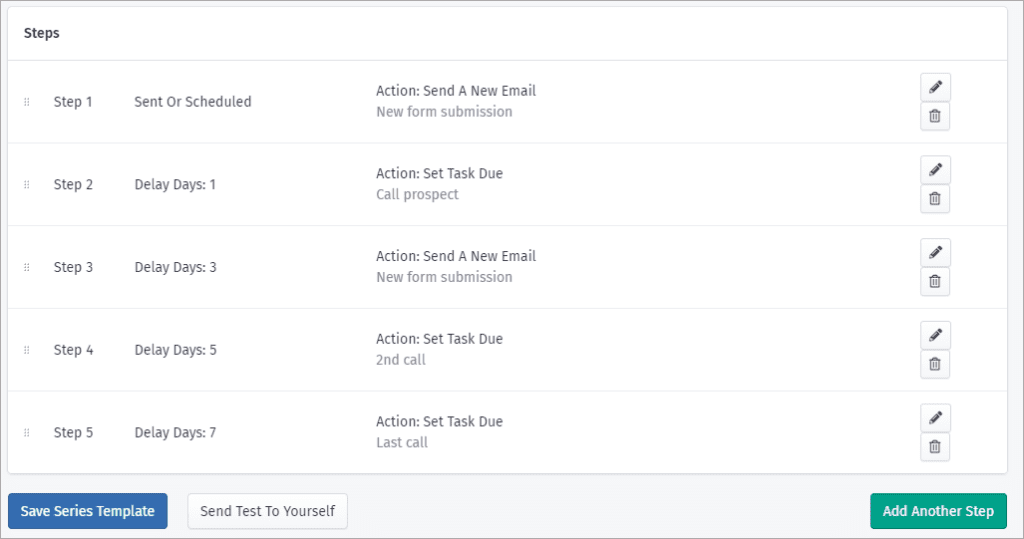Last updated on August 7th, 2023

Don’t stop nurturing your customer experience after a sale. Use these 9 strategies to increase your CLV and grow your brand with more satisfied customers.
When you think of improving your customer experience, you probably think of things like:
- Marketing and sales
- Improving operations
- Delivering a quality product or service
- Customer support
And you’d be right to improve all these things to create a better customer experience.
But here’s the truth:
The customer journey doesn’t end after they buy.
Customers will continue to buy from you in the future.
So it’s crucial to focus on creating an excellent after-sales service.
One that grows your brand, increases revenue, and helps you get more referrals.
In this post, you’ll learn:
- What Is After-Sales Service?
- Why You Can’t Neglect Your After-Sales Service
- 9 Easy Ways To Improve Your After-Sales Service

VipeCloud is the only Automation tool your small business needs to
be the hero to your customers.
With Email, Texting, Social, Suites, Chat, Stories, Video Email & Sign Up Forms fully built-in, we provide you with the perfect platform to grow your business.
15 Day Free Trial – Get started risk free. No CC needed.
What Is After Sales Service Or Support?
After-sales service or support is how you serve your customers after a sale.
Your after-sales service goal should be to continue to nurture your customer experience so you can leave a lasting impression that’ll create repeat customers.
Customer success, sales, and marketing should all be working towards contributing to your after-sales service.
Why You Can’t Neglect Your After-Sales Service
After-sales service often becomes an afterthought for a lot of companies.
Even once you’ve gotten paid, you still need to nurture the customer relationship to reap the following 3 benefits.
It’s What Makes Your Brand
Delivering a quality service or product is only half the battle for providing a quality customer experience.
Yes, your product’s ability to meet and exceed customer expectations is huge.
But, how you treat and manage people after they become your customers is how you build a memorable brand.
Which is why it’s common for customers to churn from services that they buy, but end up not seeing the value they originally sought out.
Increase CLV With Retention
It’s widely known that acquiring new customers is 5X more costly than keeping an existing one.
And 84% of companies that improve their customer experience increase revenue.

Retaining customers is easier and more effective in producing revenue than marketing to new customers.
So the more you can keep your customers coming back for more, the more value you can get from a customer.
If you’re not already focusing on increasing your Customer Lifetime Value (CLV), you’ll struggle during economic times when acquiring new customers becomes more expensive and competitive.
Grow Through Referrals
Most companies grow through word of mouth and referrals.
Although you shouldn’t just rely on referrals, working towards getting more referrals should be table stakes for your company.
This means after you make a sale, it’s your duty to give them a reason to refer you by producing results and having excellent customer support.
9 Easy Ways to Improve Your After-Sales Service
You should start by reviewing your current after-sales service:
- How would you feel if you were your customer?
- Are you finding value in your product?
- Do you have easy access to the support you need?
- Are you in contact with reps when you need it most?
Here are 9 competitive strategies that will make customers remember you forever.
1. Competence And Warmth Balance
A lot of the time, you can retain customers with warmth OR competence.
By warmth, I mean having excellent, clear communication, giving updates, being responsive, and following up when needed.
And by competence, I mean your ability to deliver a quality product or service that meets or exceeds your customers’ expectations.
If you have neither, you’re bound to lose clients FAST.
However, even with just one, you’re STILL at risk of losing a client.
When you’re able to do both, it makes it very easy to retain clients.
Focus on delivering a product that actually delivers results.
If you’re unsure, you should follow up with your clients to see how satisfied they are.
Then, ensure your company is curating a culture of excellent communication.
Customers shouldn’t have to wait longer than 24 hours for a response. Faster is better.
2. Onboarding And Implementation
Expectations should already be set from the sale on what outcome they can expect from your product or service.
This includes setting expectations for onboarding and implementing your product or service (if necessary).
Often enough, there’ll be some nuance involved with ramping up with your product or service.
For example, in SaaS (Software-as-a-Service), it’s very common for a customer to sign up for a low-tier account, poke around, and churn if they can’t figure it out on their own.
Regardless of your business model, you’re at risk of churning customers due to the confusion behind HOW to apply your product to their life.
To solve this: Your customer support team needs to be prepared to educate and consult the customer on using your product effectively.
If you’re offering a do-it-yourself product, you should consider offering implementation help.
If you sell a service, you should have a thorough onboarding process that educates your customer on what to expect, how to define success, and your process.
For example, if you’re a marketing agency, you should teach your client how to access reports to view progress because they’ll want to see the results you’re generating.
Don’t leave your customers confused in a disorganized fashion.
Stay organized and educate your customer on how to get started.
If you’re a company dealing with new customers every month, you should have a specific process to get them started.
With CRM software, you can create pipelines to manage the onboarding and implementation process.
Here’s an example of what that might look like:

3. Training And Consulting
Still, even after onboarding and implementation help, your customer support shouldn’t stop there.
With any service or product, there’ll almost always be a nuance that customers will have to figure out.
Which is why additional training and consulting should be easy for customers to access.
For example, if you’re launching a new service or feature to your customers, your support team should be there to help them learn how to use it to reach their desired outcome.
Or you can make the effort to reach out to your customer first via email.
4. Warranties And Refunds
Although you should aim to deliver the best service possible to satisfy your clients, things don’t always work out.
If you’re selling a product, you should consider offering some type of warranty or refund policy if the product doesn’t end up satisfying the customer.
If you’re selling a service that doesn’t require a lot of costs upfront, you should try to offer refunds to unsatisfied customers to protect your reputation.
But if your service does require a lot of costs up front, a refund might not be your best financial option.
So instead, you can offer to work for free until they’re satisfied with the outcome of your service.
5. Help Desk Content Support
Not every customer wants to talk to a rep when they have an inquiry about your service or product.
Some people like to figure it out on their own.

85% of customers prefer a digital experience after the sale.
So to appeal to these customers, your company should work on creating a repository of help articles for your product or service.
What are the most common questions your support team deals with?
Create how-to content on those in the form of concise articles and videos.
This will help your support team deal with fewer inquiries, and it’ll help customers solve their problems faster.
6. Real-Time Customer Support
Some people prefer to figure things out without speaking to someone, but others prefer to talk to a human when they have a problem.
It’s essential to cater to both.
Ideally, you should be able to offer live customer support during business hours.
If your business involves a product or service that’s essential (healthcare, plumbing, electric, etc.) — you should consider having on-call support.
The last thing you want is your customers going through a disaster without support.
You can offer a phone line for customers to call.
Or you can use a sign-up form that links to your CRM to handle customer support inquiries.

7. Reward Your Customers
Everybody loves free stuff.
If you really want to wow your customers after a sale, you can offer them a free complimentary product or service they weren’t expecting.
Or you can also use it as a way to make up for a poor quality experience that a customer might’ve experienced.
For example, if you’re an HVAC company and want to make it up to a customer that isn’t fully satisfied, you could give them a $50 coupon on a future repair or service.
Additionally, customers should be incentivized with rewards to come back.
This will help increase your CLV (Customer Lifetime Value).
Customer rewards could be given at random, or they could be part of a loyalty program.
8. Check In With Customers For Feedback
Happy and not-so-happy customers love to be heard.
And regardless of which type of customer gives feedback, it’s a win-win for your organization.
Happy customers are a source of good reviews that’ll help you grow your business and build more social proof.
Not-so-happy customers want to be understood and compensated.
Also, any negative feedback can be used to improve your business in the future.
You can automate the feedback forms with email and sign-up forms with your CRM.

9. Upsell And Cross-Sell Customers With A Value-Focused Approach
The above 8 strategies will help you retain customers.
But to further increase your CLV, you should also learn and train your staff on how to effectively upsell and cross-sell.
(Upselling is selling more of the same product to the same customer. Cross-selling is selling the same customer a complimentary product.)
Note: You don’t want to come off as salesy. You want to be viewed as more of a trusted consultant.
Don’t try upselling in a pushy manner to a customer for something that they don’t even need.
Instead, offer nice-to-have products and services as an option. Be clear if it’s not necessary.
However, you should still be clear about the value and benefits that it’ll provide. Value-based selling resonates with customers.
It can be hard to know when to upsell or cross-sell when you’re not tracking your customers.
To be more calculated, decide on attributes that determine if a customer is ready for the upsell.
Assign the attributes a score in your CRM.
When a customer reaches a scoring threshold, you can evaluate if it’s time to upsell.
Use A CRM To Help Improve Your After-Sales Service
Tracking customers is crucial to guiding your reps to provide a stellar after-sales experience.
If you’re still tracking customers in spreadsheets or a hard-to-use CRM, request a demo with VipeCloud today.
Our customer success team will help you discover how CRM can improve the ROI of your sales efforts.
Or try VipeCloud for free if you’d prefer to see it for yourself.
After-sales service or support is how you serve your customers after a sale. Your after-sales service is key to nurturing your customer experience so you can leave a lasting impression that’ll create repeat customers.
Your after-sales service should improve your customer experience, which will help you grow your brand, get more referrals, and increase your CLV (Customer Lifetime Value).
You need to continue to bring value to your customer after a sale through customer support, training, implementation, upselling, cross-selling, and rewards.

Leave a Reply